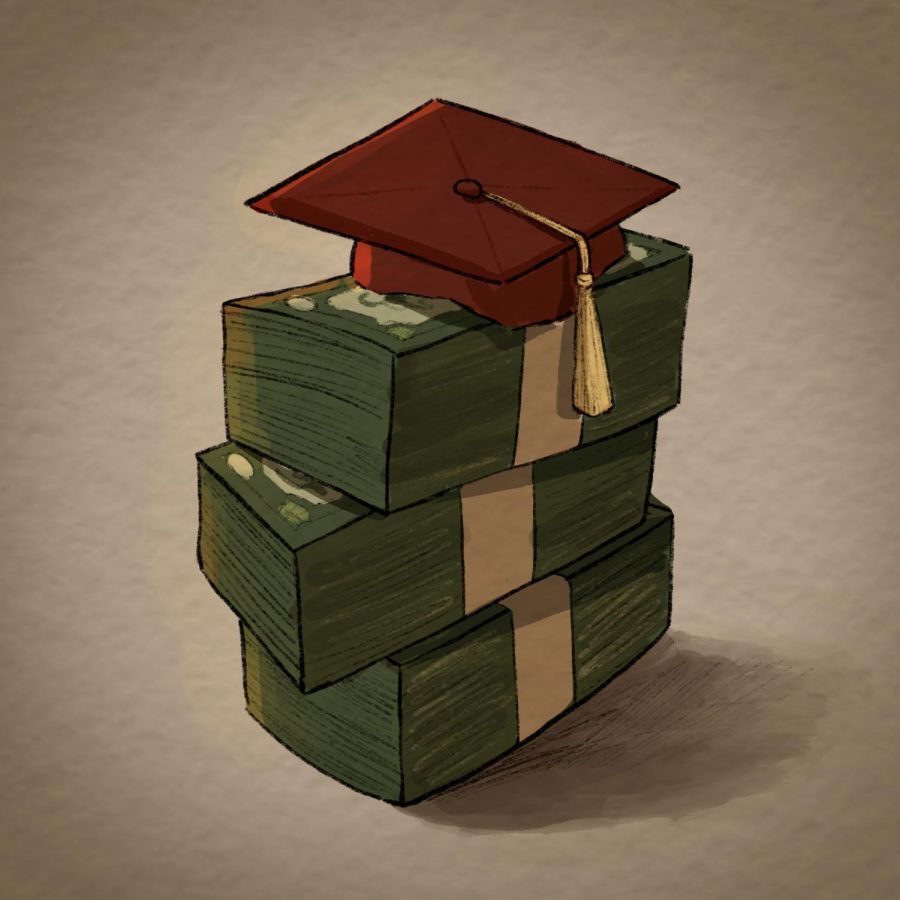The Crisis Of Student Debt
April 3, 2023
One of the most significant problems in America is none other than student debt. This problem has grown over the past two decades with a rise in average debt and economic issues that have led to many college graduates being unable to repay their loans, causing financial burdens lasting generations. Forbes says, “According to a CNBC report, “85 percent of student loan borrowers say difficulty in saving has delayed their ability to buy a house, and other research indicates that those with student loan debt also are less likely to have taken out car loans. They have worse credit scores. They appear to be more likely to be living with their parents.” It is these effects of our system today that have prevented many people from pursuing or starting a new phase of their lives.
One of the most crucial effects of student debt is on our economy, which has become one of the more debated issues due to the particular effects it has on the economy. Aecf.org says, “The Education Data Initiative notes, ‘The effect student loan debt has on the economy is similar to that of a recession, reducing business growth and suppressing consumer spending.’ With student debt, some include a reduction of spending, and an increased reliance on social programs which affect the housing markets and business growth, especially small businesses. With this in my mind, it is now more crucial than ever to address the causes of student debt, how to fix it, and the role it plays in society.
Unsurprisingly, race and class are big factors in student debt. St.Louis.org says, “ Young Black women are the most likely to have student debt, and their average loan balance is the highest at $11,000. Black men and Black women both start out with more student debt than their white counterparts and because of their lower earnings, they pay it off slowly. Gender and racial disparities in student debt are growing over time as a result.” Student debt not only affects those primarily of color but also continues to contribute to the inequality of the economic system. Junior Angela Su says, “People who do not have to worry about debt have a huge jumpstart in life, allowing it to be unfair for those who are financially unstable.” Math teacher Leah Karpenko adds, “Students who do not come from wealthy families are most impacted by student debt. Their financial literacy is likely lower, so understanding how high-interest rates and only making minimum payments on loans impact credit scores and future ability to buy homes is hard for these students. There is also an issue of embarking on a degree that does not benefit financially from the debt it incurs.”
This brings up the topic of class, while it is true that low-income families are more likely to have issues with their finances it is actually the middle class that shoulders the most burden. According to Dartmouth professor Jason Huole’s study, “students from families earning between $40,000 to $59,000 per year racked up 60 percent more debt than lower-income students and 280 percent more than their peers whose families earned between $100,000 and $149,000 per year.” This leads back to the fact that many middle-class families do not qualify for financial aid because of their income but tend not to have the money to cover the costs of college.
A factor that goes hand in hand with the problem of student debt is schools, and how efficiently, or if at all they teach students about financial literacy. Although personal finance is not a required part of every school curriculum, IHS is one of the schools that do offer it as an elective. Karpenko says, “Ever since the 1983 A Nation at Risk report, high schools have been mandated to teach four years of English, three years of math, and three of science, the standard graduation requirements we see now. Where is there space to fit in the additional curriculum for life skills while teaching students to be ready for rigorous college academics? Luckily, students get to choose what electives they take, and Personal Finance is an example of elective students can take to help build life skills like skills in finance.” While from a teacher’s perspective classes like personal finance do help students gain important life skills, from a student’s perspective that is not the case. Senior Siena Kinsley does not believe high school prepares students for student debt well. She says, “I think that we need to require economic classes over classes like calculus which are not as valuable in daily lives for most Americans unless you are going into a stem field. High school does not discuss anything about economics, additionally, many people are naive to what student debt is, they do not understand what loans really mean because their parents are helping them or they are not educated enough to understand the gravity of it.” Freshman Lachlan Maggs adds, “Most of high school is about unimportant matters most people would not deal with in their future careers. High school does not spend enough time on things like how to pay taxes or other issues of that nature.”
The most effective way student debt can be resolved is by the government and currently, under the Biden administration a student debt relief plan has been introduced. According to aecf.org, “Despite the student loan relief enacted by the Biden administration in August 2022, millions of borrowers still suffer the burden of insurmountable debt.” This raises the question of what exactly the government should do to create more effective solutions. Karpenko says, “ I think the government should do more to keep the cost of schools down, to be honest. Private companies and wealthy individuals benefit from expensive schools, fattening the pockets of lobbyists and subsequently politicians. Rather than use subsidies to fatten pockets, reducing the cost through rigorous examinations of budgets and cost justifications would make more sense.”
Although student debt is a big issue today, it also brings attention to many of the inequalities and disparities of society as well as root problems; the effects of the lack of financial literacy and knowledge, which we are seeing today. There is no doubt that a lot needs to change long term to see these issues resolved and to continue to address and advocate for better change.



